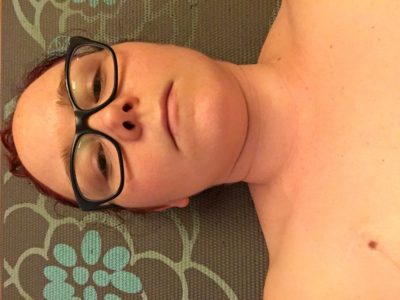The MastAttack 107: The Layperson’s Guide to Understanding Mast Cell Diseases, Part 61
75. What other diseases and disorders are commonly associated with mast cell disease?
I often joke that it would be easier to list what conditions are not commonly associated with mast cell disease because so many conditions occur alongside it. However, there are some conditions that you see a lot in the mast cell population relative to others. In every instance, mast cell disease has the potential to irritate the other condition and vice verse.
Clonal hematologic disorders. Systemic mastocytosis is so frequently accompanied by other blood disorders that it has a diagnosis specifically for this phenomenon: systemic mastocytosis with associated hematologic disorder (SM-AHD). It is estimated that up to 40% of patients with SM eventually develop another clonal hematologic disorder. A clonal hematologic disorder is a condition in which your bone marrow makes too many blood cells. Examples include chronic myelogenous leukemia, acute myeloid leukemia, polycythemia vera, myelofibrosis, and essential thrombocythemia.
Unlike mastocytosis, MCAS can occur secondarily to lots of conditions. In some instances, it’s not clear if the MCAS is secondary to a condition or the condition is secondary to MCAS or neither.
Heritable connective tissue diseases. Ehlers Danlos Syndrome (EDS), is the most common connective tissue disease in the mast cell population. There are multiple types of EDS. While hypermobility type EDS (formerly called Type III) is the most common in MCAS patients, other forms occur also. Other connective tissue diseases seen in mast cell patients include Marfan Syndrome and Loeys-Dietz Syndrome.
Dysautonomia. Dysautonomia is a condition in which your body’s autonomic nervous system doesn’t regulate essential bodily functions correctly. POTS is the most common form of dysautonomia found in mast cell patients but other forms occur, too.
Mast cell patients commonly have MCAS, EDS and POTS together. They cooccur so commonly that some experts think that that this presentation is actually one overarching disease rather than three separate ones affecting mast cell patients.
Eosinophilic GI disease. Mast cells are closely related to eosinophils. They activate eosinophils and eosinophils activate them. Mast cell patients sometimes have eosinophil GI disease where eosinophils activate to lots of triggers and damage the GI tract.
Immunodeficiency. Conditions that specifically impair a person’s immunity, especially those that affect T or B cells, like SCID or CVID, are not unusual in mast cell patients.
Gastrointestinal disease. Mast cells normally live in the GI tract so they are very sensitive to GI inflammation. MCAS can occur secondarily to lots of GI diseases. Crohn’s, ulcerative colitis, inflammatory bowel disease, and irritable bowel syndrome are examples. GI disorders that specifically affect motility are also seen in mast cell disease, like gastroparesis and chronic intestinal pseudoobstruction.
Allergies. Some mast cell patients have true IgE allergies or other allergic disorders like atopic dermatitis.
Autoimmune disease. Autoimmune disease is more common in MCAS patients than in SM patients. The specific disorder could be virtually any autoimmune condition, including rheumatoid arthritis, lupus, Hashimoto’s thyroiditis, autoimmune urticaria, and many others.
Adrenal insufficiency. The body’s mechanisms for produce stress hormones like cortisol can become dysregulated in mast cell patients. This results in a situation in which the body does not make enough steroids of its own to take care of the body during periods of stress. Patients with adrenal insufficiency are dependent upon daily steroids to stay safe.
Chiari malformation. This condition affects the space around a person’s brainstem, causing a wide array of symptoms. Some patients have surgery for this condition.
Asthma. It is difficult to draw an exact line where mast cell disease ends and asthma begins in mast cell patients as the symptoms can be virtually identical.
This list is not exhaustive. Many other conditions sometimes occur in mast cell patients.
For additional reading, please visit the following posts:
The MastAttack 107: The Layperson’s Guide to Understanding Mast Cell Diseases, Part 31
The MastAttack 107: The Layperson’s Guide to Understanding Mast Cell Diseases, Part 32
